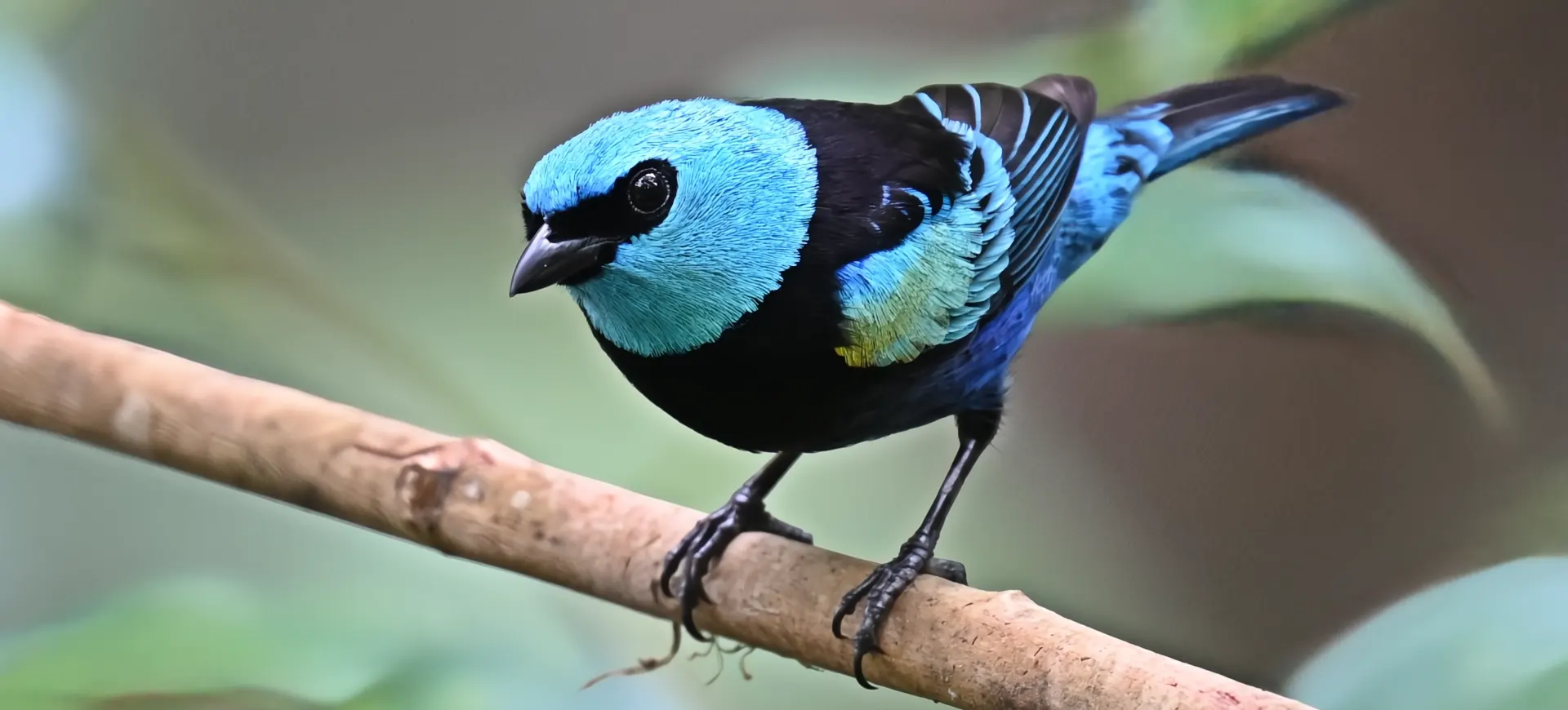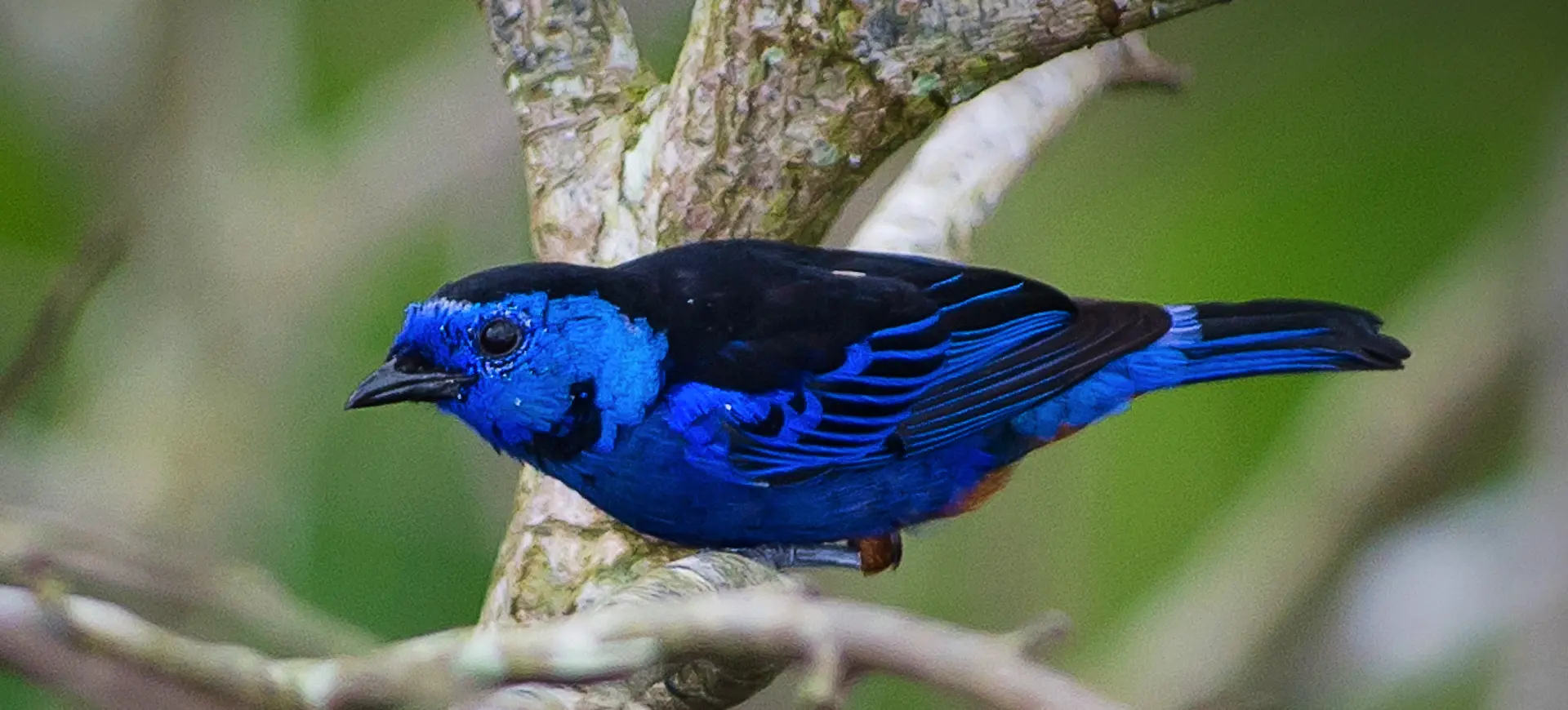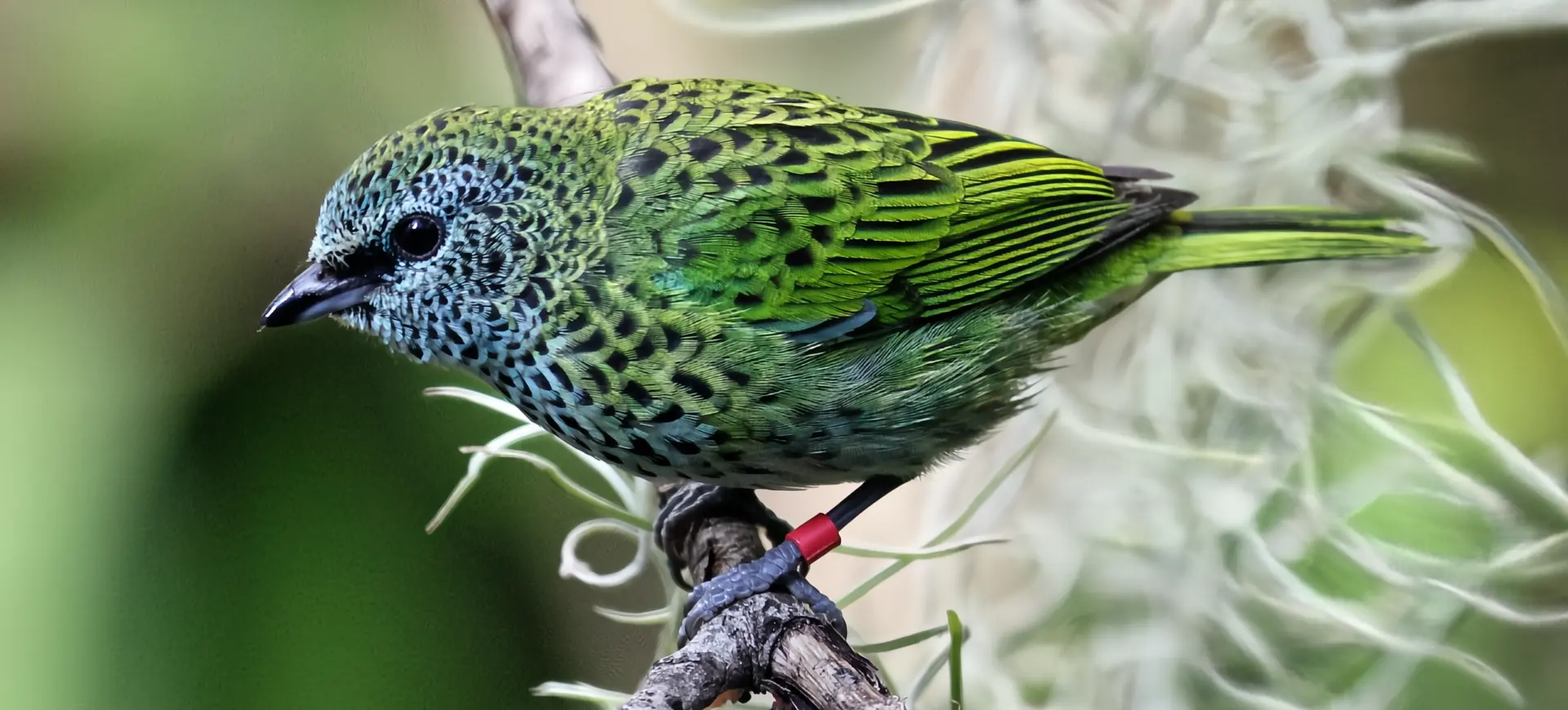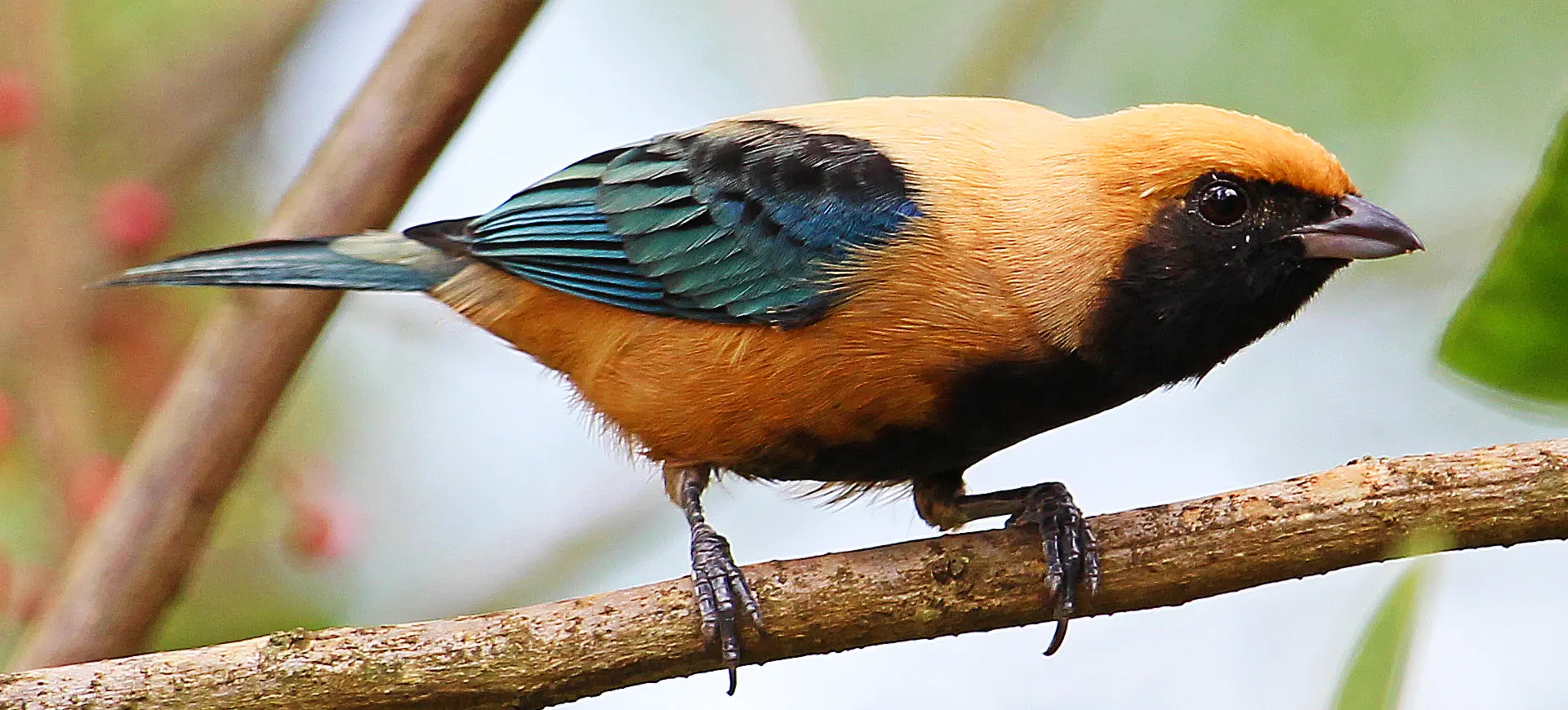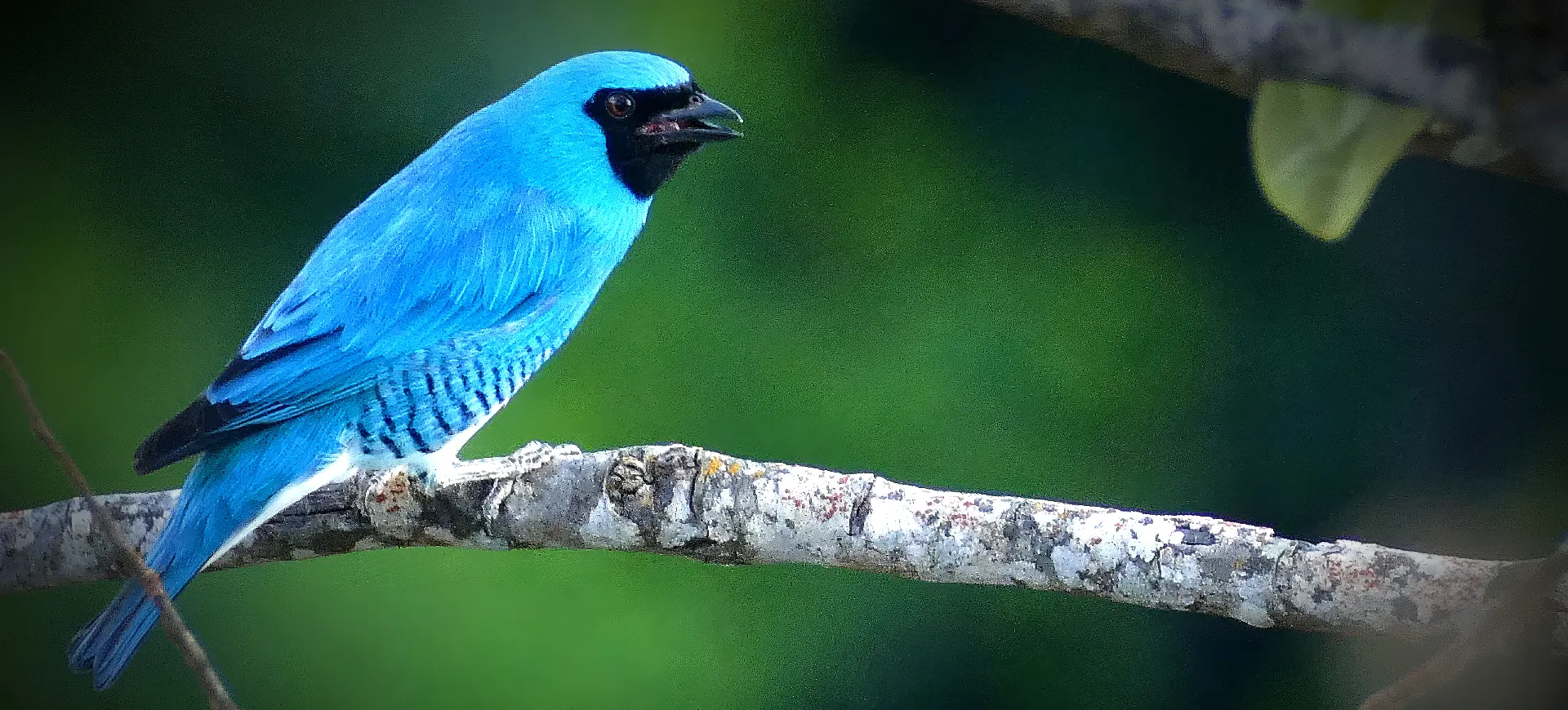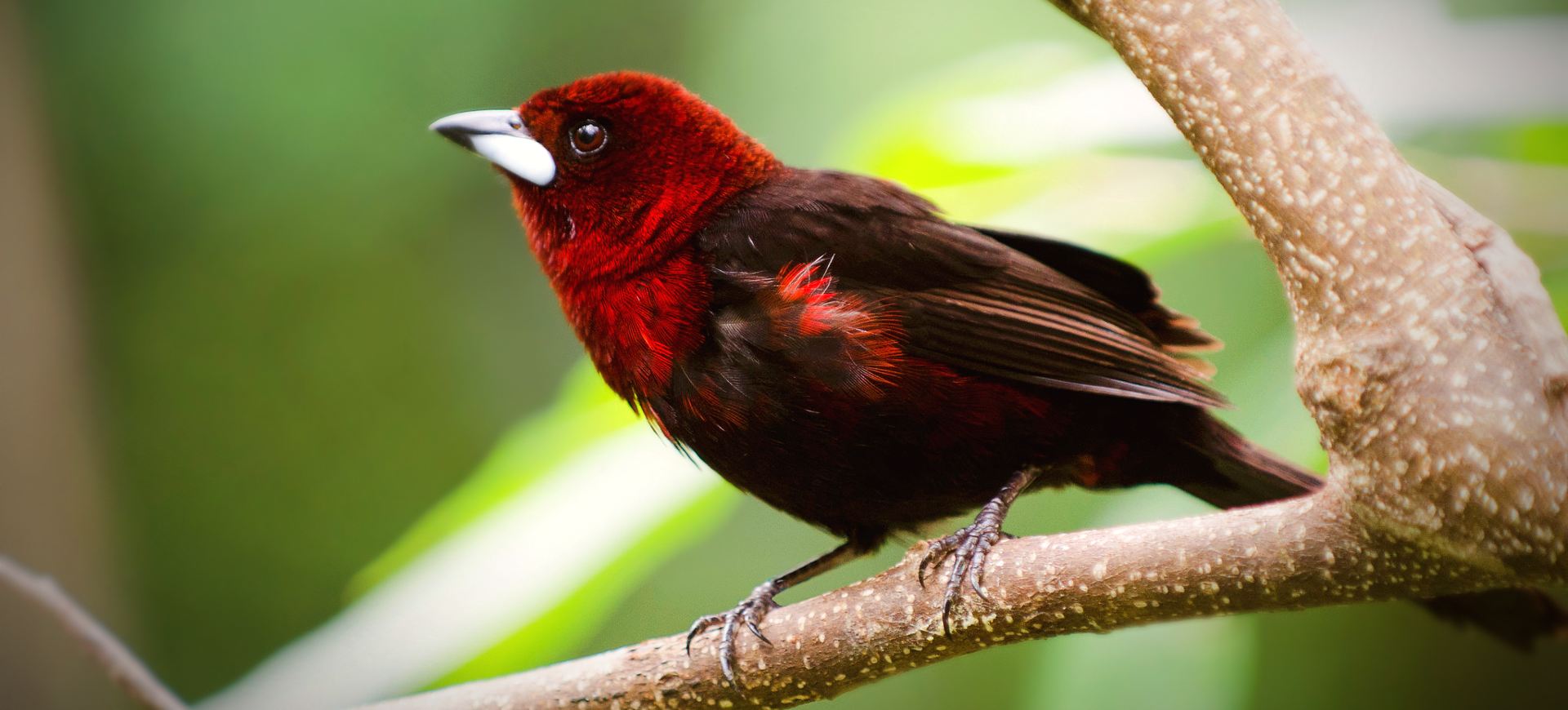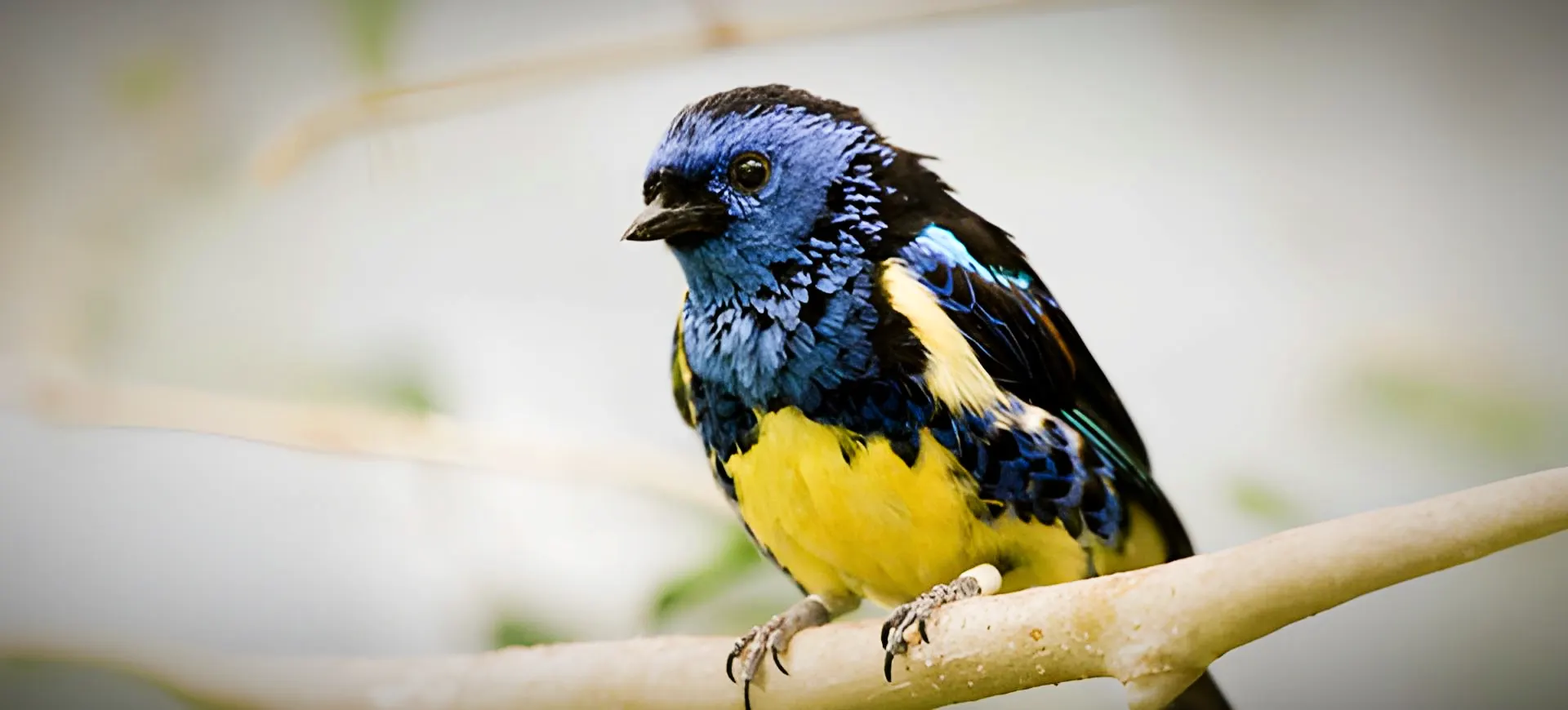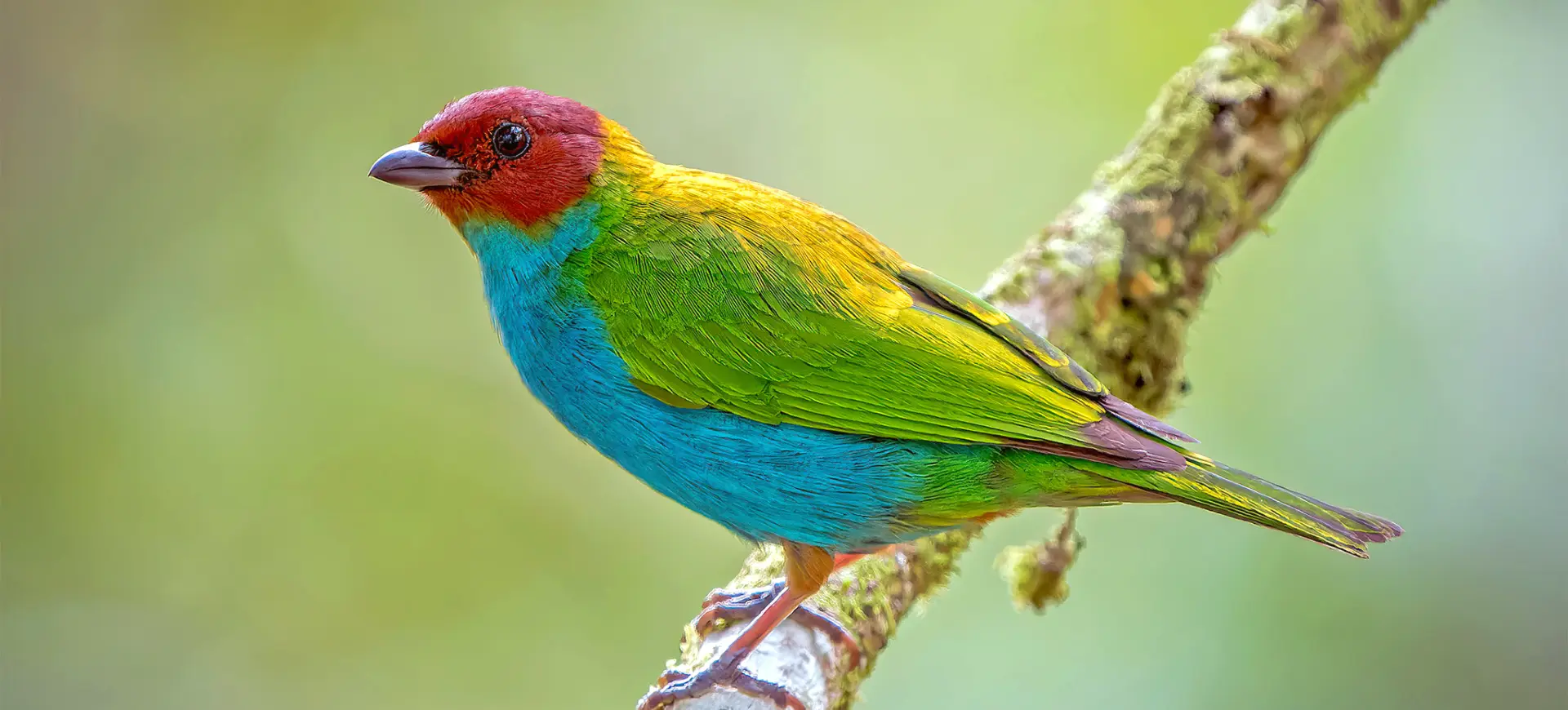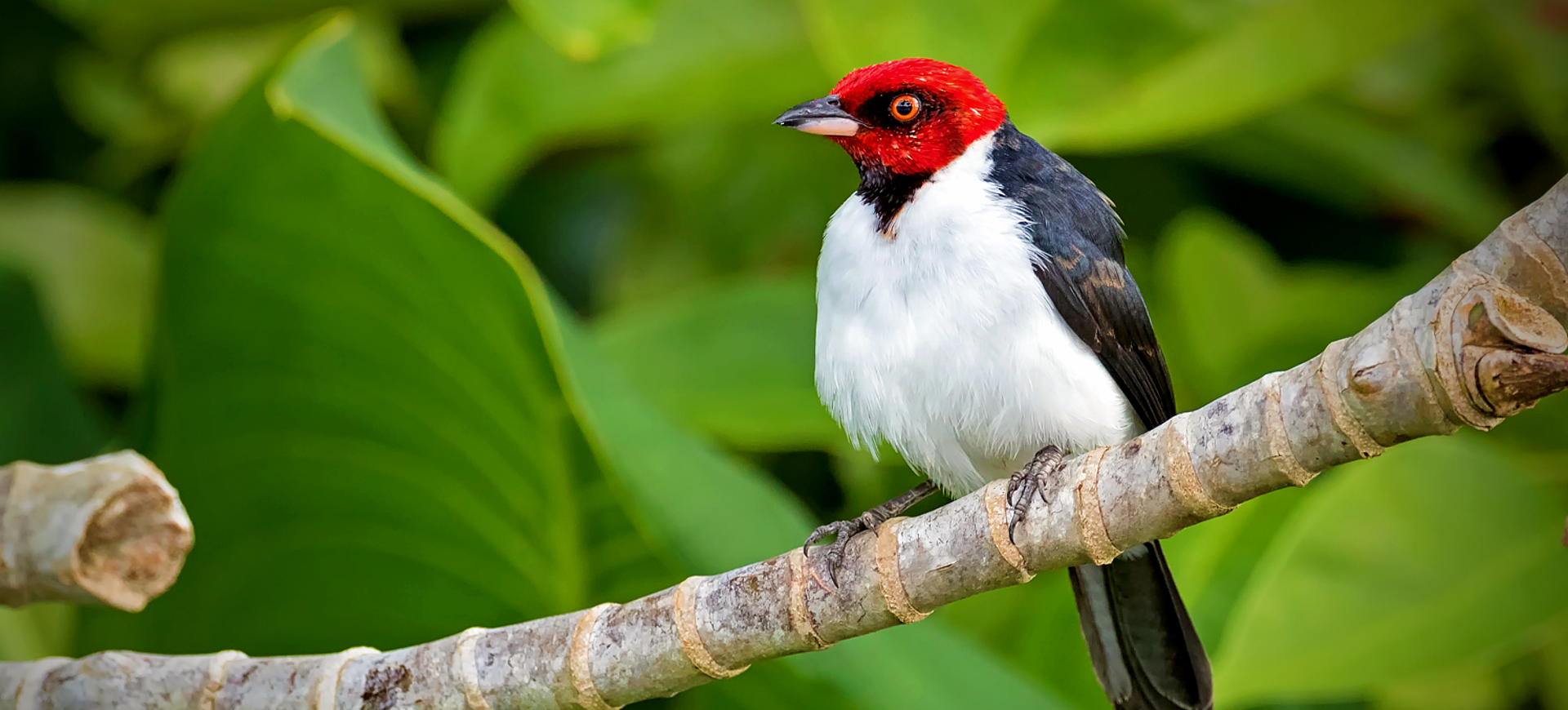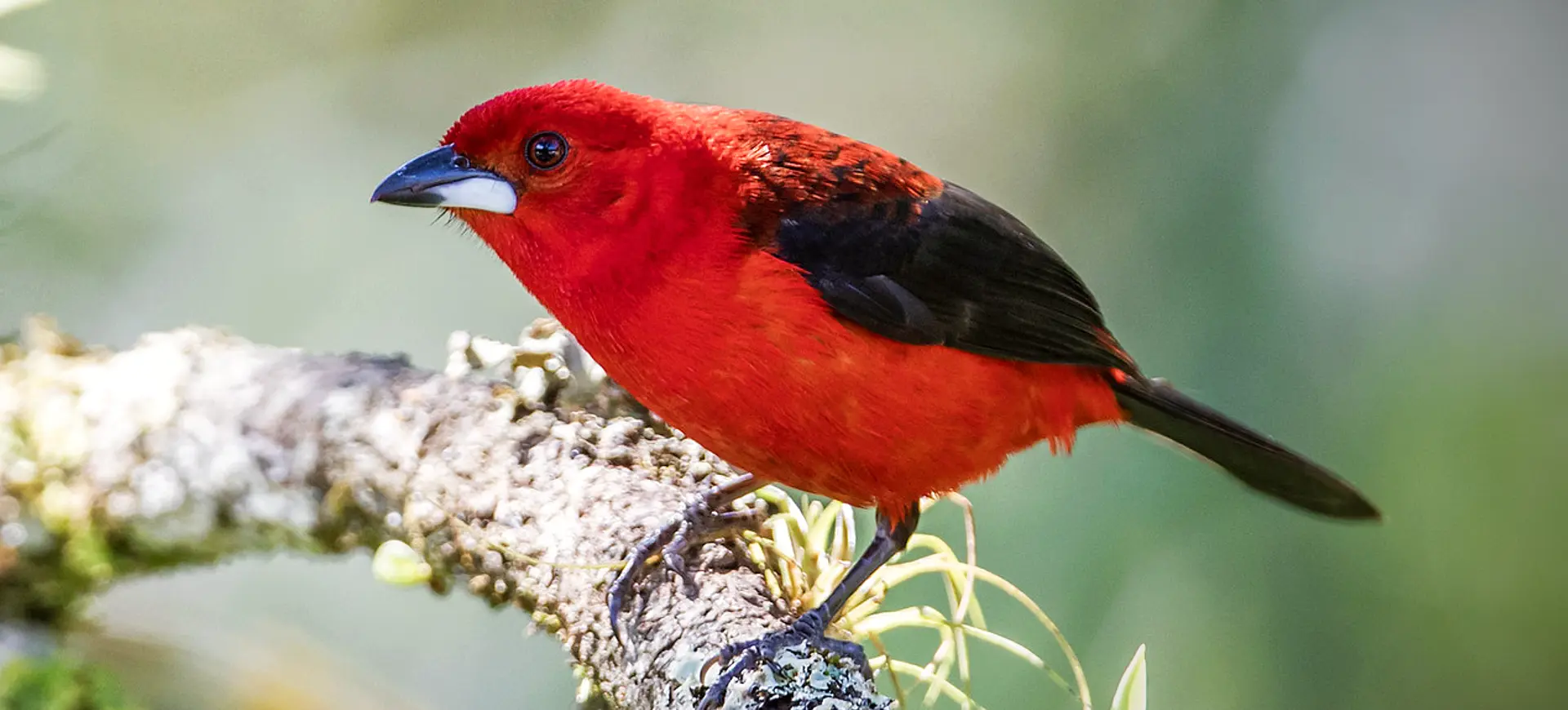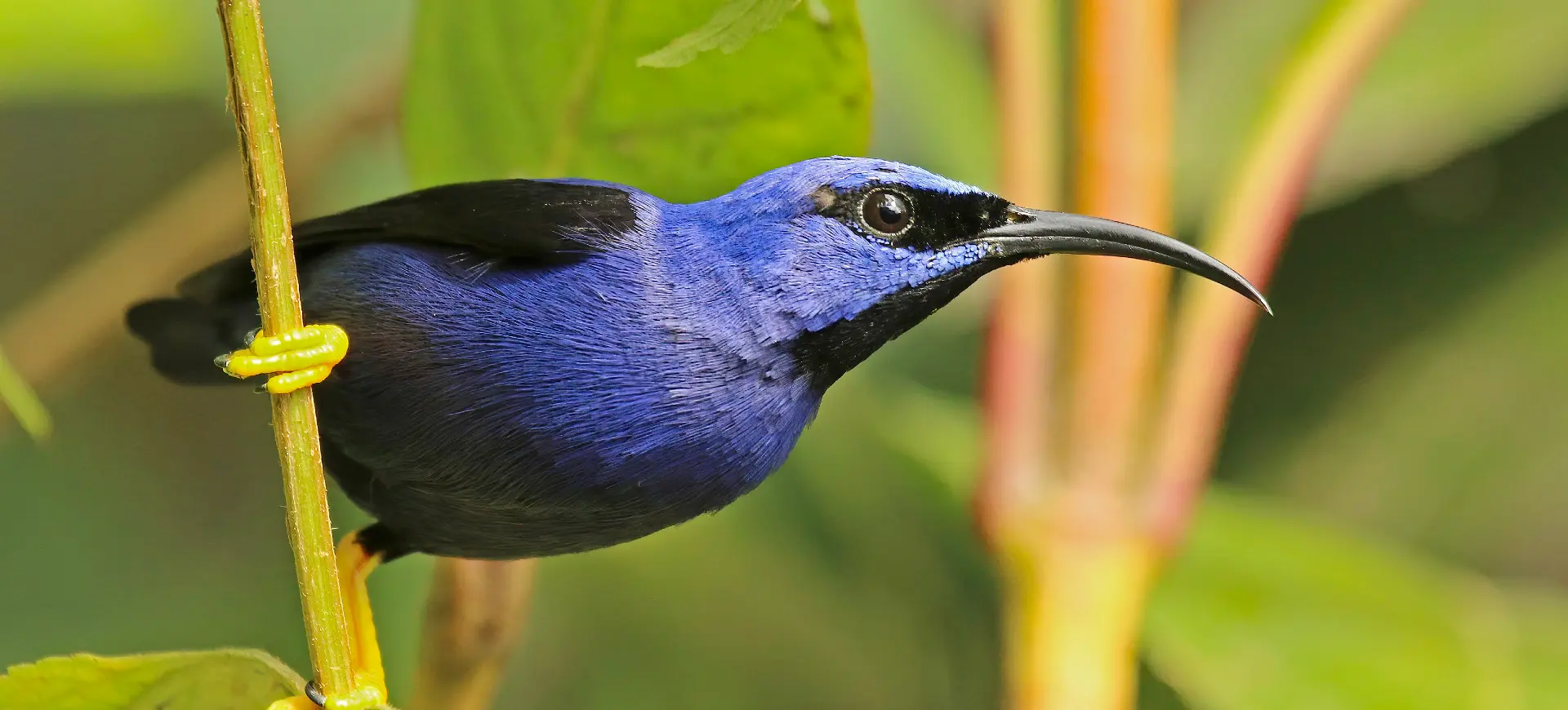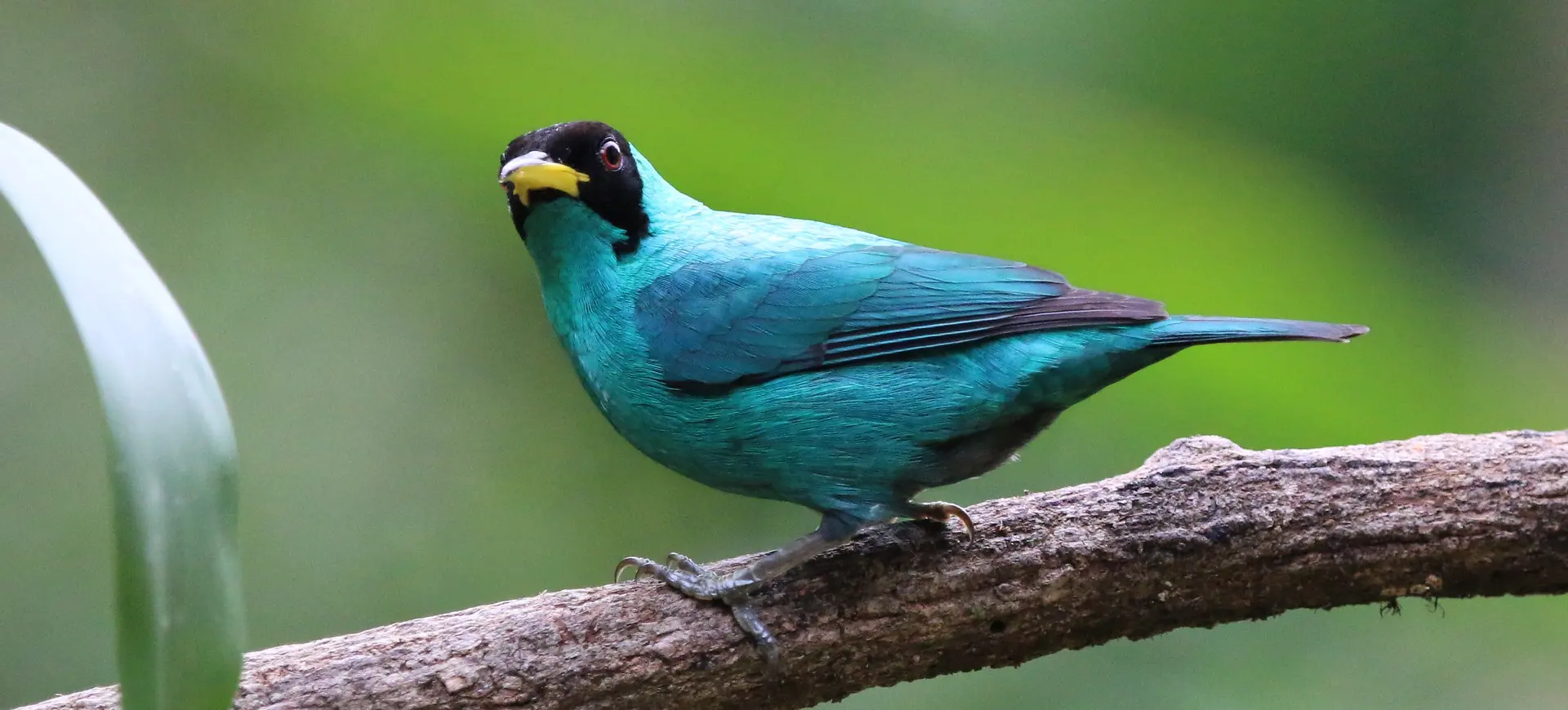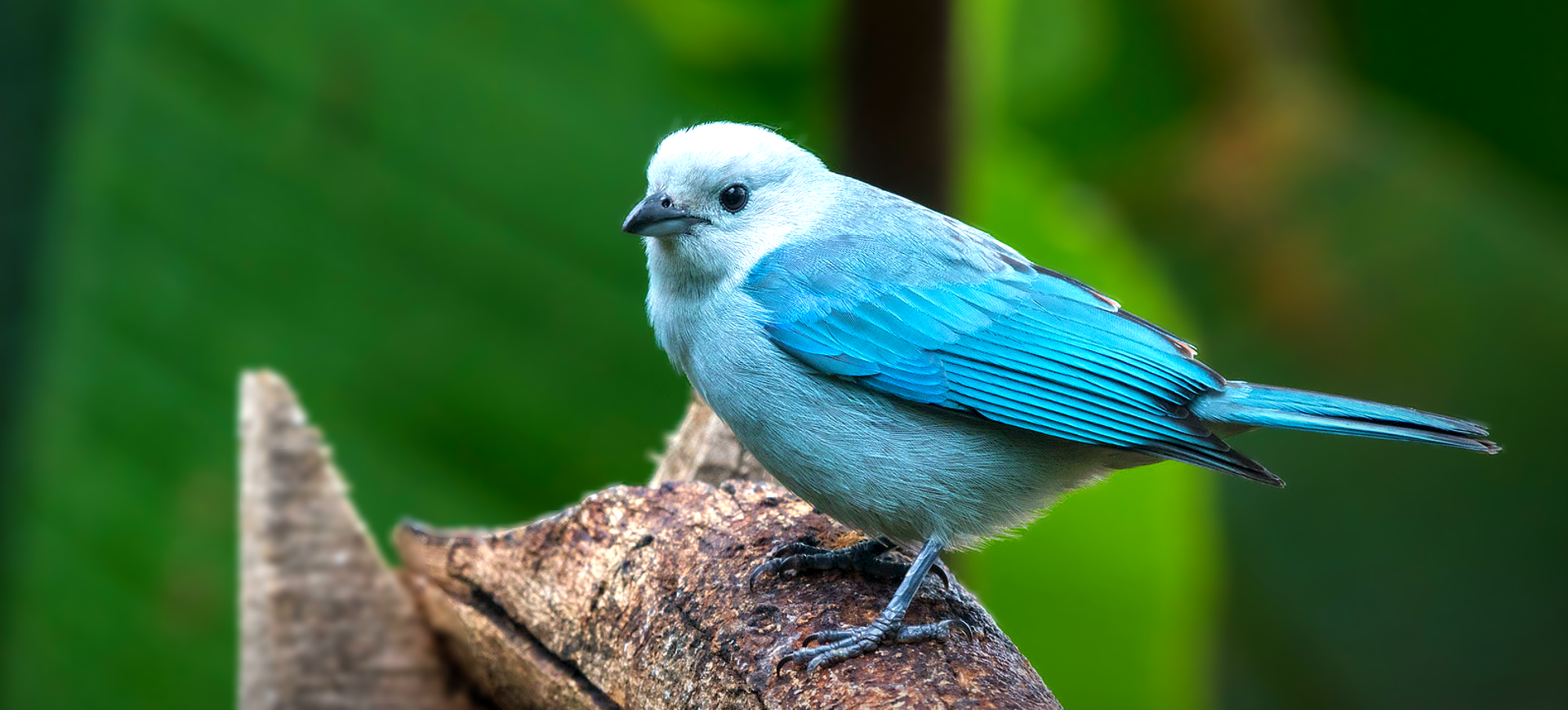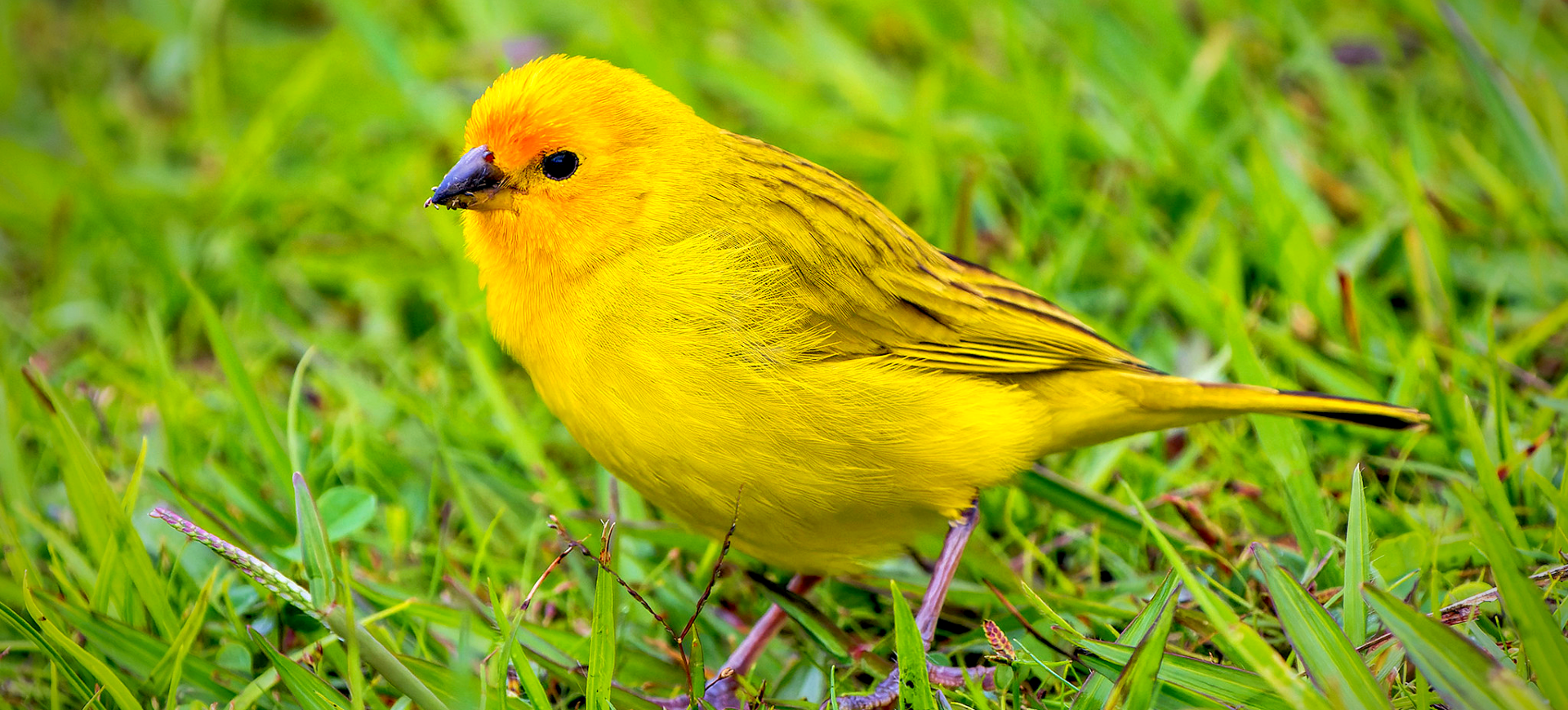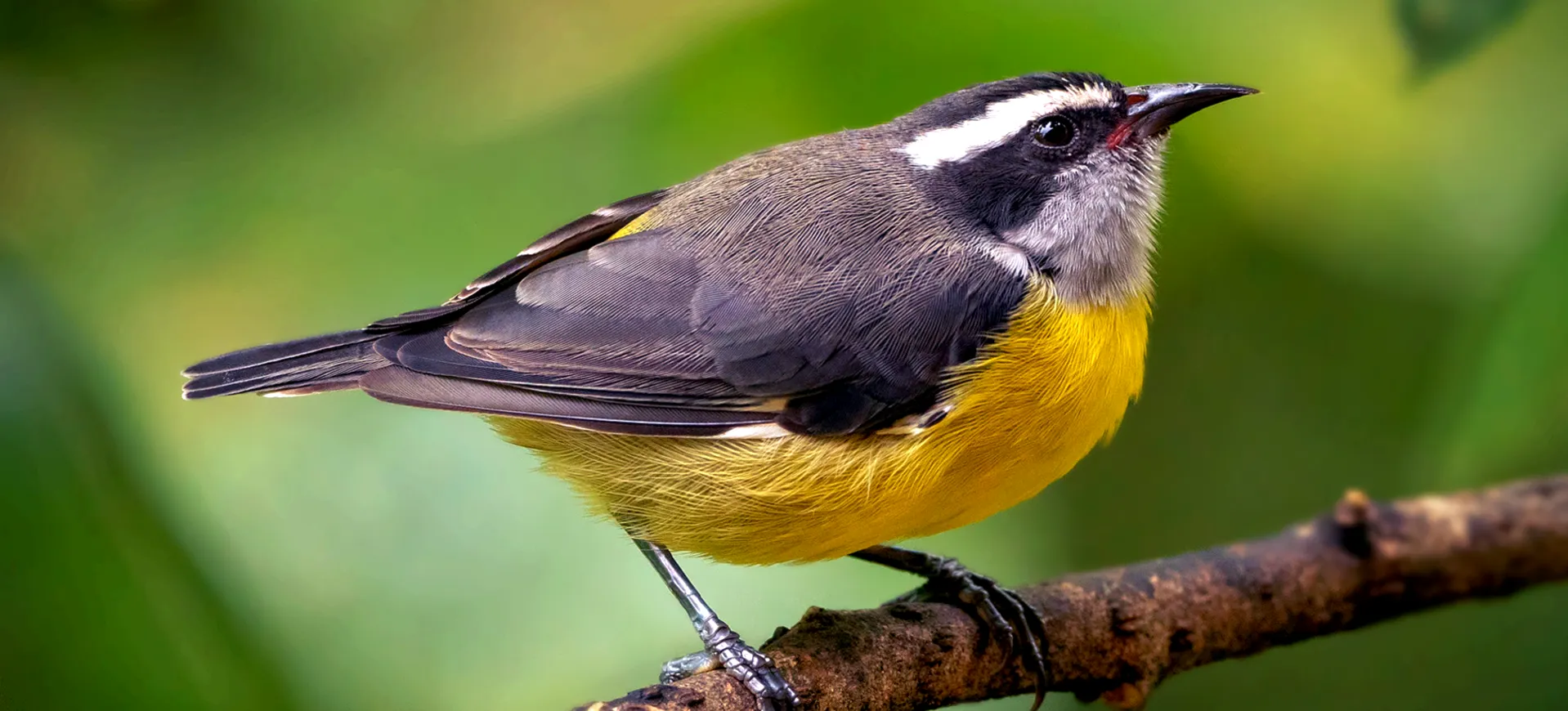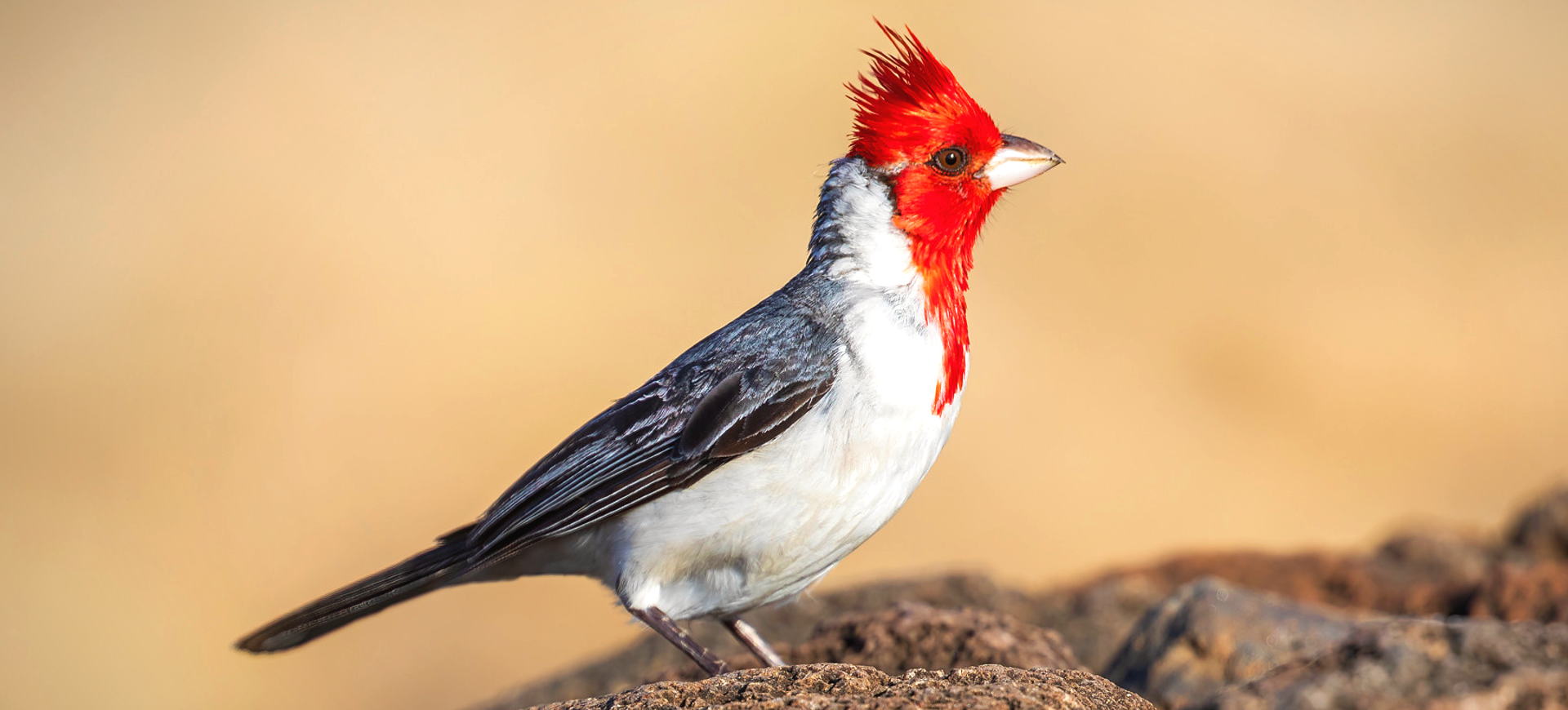Overview
The Paradise Tanager, a vibrantly colored bird, is native to the Amazon Basin in South America. Boasting a spectacular plumage, the bird has a light green head, blue chest, and yellow and black body, making it a visual delight in its natural habitat. This species is a part of the tanager family, known for its brightly colored feathers, and is a popular bird among birdwatchers and ornithologists. The Paradise Tanager is primarily found in lowland tropical rainforests, often in the canopy layer, where it forages for food.
Regarding diet, the Paradise Tanager primarily feeds on fruits and insects. Its feeding habits play a significant role in seed dispersal, contributing to the health of the rainforest ecosystems. The bird’s preference for fruit also leads it to frequent areas with abundant fruiting trees, impacting its distribution within its habitat. Additionally, the Paradise Tanager occasionally consumes nectar, showcasing a varied diet that supports its nutritional needs.
While not a migratory bird, the Paradise Tanager exhibits some movement within its habitat. This movement is often in response to the availability of food sources, particularly fruiting trees. The birds’ vibrant colors, particularly the males, are believed to play a role in mating and territorial displays. The Paradise Tanager is known for its social behavior, often seen in small flocks, which helps in foraging and provides protection from predators.
Taxonomy
Kingdom
Phylum
Class
Order
Family
Genus
Species
Type
Physical Description:
The Paradise Tanager is noted for its multi-colored plumage, which includes a light green head, sky blue chest, and a body with shades of yellow, black, and red. The males and females are similar in appearance, although the males tend to have slightly brighter colors. This bird is medium-sized among tanagers, with a compact body and a relatively short, stout bill adapted for fruit consumption. The combination of its striking coloration and active behavior makes the Paradise Tanager a highly noticeable species in its habitat.
The bird’s bright plumage serves aesthetic purposes and plays a role in social interactions, such as mating and territory defense. The Paradise Tanager’s feathers reflect light, enhancing their brightness and visibility in the dappled light of the rainforest canopy. Its agile movements and ability to maneuver through dense foliage are essential for foraging and avoiding predators. The species’ overall physical appearance, including its size and shape, is well-suited to its arboreal lifestyle and dietary habits.

Lifespan: Wild: ~8 years || Captivity: ~10 years

Weight: Male & Female: 0.5-0.7 oz (14-20 g)

Length: Male & Female: 5.5-6.3 in (14-16 cm)

Wingspan: Male & Female: 6-7 in (15-18 cm)

Top Speed: Unknown
Characteristic:
Native Habitat:
The Paradise Tanager is native to the Amazon Basin, inhabiting lowland tropical rainforests. The species is particularly adapted to life in the rainforest canopy, where it forages for food and nests. The bird’s preference for this habitat is influenced by the abundance of fruit trees and the cover provided by dense foliage, which offers protection from predators.
The rainforest habitat of the Paradise Tanager is characterized by high biodiversity and a complex ecosystem, which supports a wide variety of plant and animal species. The birds’ presence in these habitats indicates a healthy, functioning ecosystem, as they rely on the availability of fruits and insects for survival. The dense foliage and high humidity of the rainforest also provide ideal conditions for nesting and raising young, which is essential for the species’ reproduction.
Climate Zones:
Biomes:
WWF Biomes:
Biogeographical Realms:
Continents:
Diet:
Diet & Feeding Habits:
The Paradise Tanager primarily feeds on a diet of fruits and insects, making it an omnivore. The bird’s fruit consumption plays a crucial role in seed dispersal, aiding in the regeneration of rainforest flora. Insects, on the other hand, provide essential proteins, complementing the nutritional value of fruits. This fruit and insect diet combination helps maintain the bird’s energy requirements and overall health.
In its natural habitat, the Paradise Tanager is often observed foraging in the canopy, moving agilely among the branches in search of food. The bird’s feeding habits are closely linked to the fruiting cycles of trees in the rainforest, indicating a dependence on the health and diversity of its ecosystem. During certain times of the year, the bird may also consume nectar, demonstrating its adaptability and opportunistic feeding behavior. Group foraging is common in this species, with small flocks often seen feeding together, which may increase feeding efficiency and provide protection from predators.
Mating Behavior:
Mating Description:
The Paradise Tanager’s mating behavior includes vibrant displays by the male to attract a female. These displays often involve showing off their colorful plumage and engaging in vocalizations. Once a pair is formed, both the male and female participate in nest building, typically in the dense foliage of the rainforest canopy. The nest is usually a small, cup-shaped structure made from plant materials.
During the breeding season, the female lays two to three eggs, which she incubates while the male provides food and protection. The monogamous nature of the species during breeding ensures a cooperative effort in raising the offspring. After hatching, both parents feed and care for the young, essential for their survival and development.
Reproduction Season:
Birth Type:
Pregnancy Duration:
Female Name:
Male Name:
Baby Name:
Social Structure Description:
The Paradise Tanager is typically observed in small groups or flocks, particularly outside the breeding season. These
social structures facilitate efficient foraging and provide increased vigilance against predators. In the breeding season, however, they tend to be more solitary or in pairs, focusing on nesting and raising their young. The bird’s social interactions are often centered around food sources, with individuals communicating through vocalizations and body language.
In mixed-species flocks, the Paradise Tanager benefits from the group’s diversity, which can lead to more effective foraging and enhanced protection from predators. This behavior is common in many tropical birds and highlights the interconnected nature of rainforest ecosystems. Understanding the social dynamics of the Paradise Tanager provides insights into its survival strategies and behavior, contributing to effective conservation strategies and habitat management.
Groups:
Conservation Status:
Population Trend:
The Paradise Tanager is currently listed as ‘Least Concern’ by the IUCN, indicating a relatively stable population in the wild. This stability is attributed to the bird’s wide distribution and adaptability to its rainforest habitat. However, localized threats such as habitat loss and degradation can impact certain populations, making continued monitoring and conservation efforts important.
The species’ ability to thrive in various rainforest habitats has contributed to its stable population status. However, ongoing deforestation and habitat fragmentation in the Amazon Basin remain concerns. Protecting large rainforest areas and promoting sustainable land use practices are crucial for the long-term conservation of the Paradise Tanager and the biodiversity of its habitat.
Population Threats:
The primary threat to the Paradise Tanager is habitat loss due to deforestation in the Amazon Basin. The destruction of tropical rainforests for agriculture, logging, and development directly impacts the bird’s habitat, reducing the availability of food sources and nesting sites. Climate change poses an additional threat, potentially altering the rainforest ecosystem and affecting the availability of food resources.
Conservation efforts focusing on protecting and restoring tropical rainforests are crucial for the survival of the Paradise Tanager. Sustainable land-use practices and the establishment of protected areas can significantly benefit the species. Education and awareness programs can also play a role in the bird’s conservation, promoting the importance of preserving natural habitats.
Conservation Efforts:
Conservation efforts for the Paradise Tanager primarily focus on habitat conservation and sustainable land use. Protecting large areas of tropical rainforest is essential for maintaining the bird’s natural habitat and food sources. Reforestation projects in areas of habitat loss can help restore crucial feeding and nesting sites for the species. Conservation organizations often work to promote sustainable land-use practices that benefit both the environment and local communities.
Research plays a significant role in the conservation of the Paradise Tanager. Studies on the bird’s ecology, behavior, and habitat requirements provide valuable information for conservation planning. Collaborative efforts between conservation organizations, governments, and local communities are vital for effective conservation strategies. Education and awareness initiatives that involve local communities in habitat protection can foster a sense of stewardship and ensure the long-term success of conservation efforts.
Additional Resources:
Fun Facts
- The Paradise Tanager’s vibrant plumage includes a unique combination of green, blue, yellow, black, and red.
- Despite their bright colors, these birds can be surprisingly difficult to spot in the dappled sunlight of the rainforest canopy.
- The species is not known for long-distance migration, but it may move locally in response to the availability of food sources.
- The Paradise Tanager plays a significant role in its ecosystem as a seed disperser, aiding forest regeneration.
- They are known for their musical and varied songs, which add to the rich soundscape of the rainforest.
- The species’ scientific name, “Tangara chilensis,” reflects its striking appearance; “Tangara” is derived from the indigenous Tupi word for dancer, a reference to their lively movements.
- These birds are relatively adaptable within their rainforest habitat, utilizing different forest strata for foraging and nesting.
- Paradise Tanagers often bathe in rainwater collected on leaves, a practical and entertaining behavior to watch.
- They are an important subject of study for ornithologists interested in rainforest ecology and bird behavior.
- Conservation efforts for the Paradise Tanager are part of broader initiatives to protect the Amazon rainforest, one of the most biodiverse regions on Earth.





